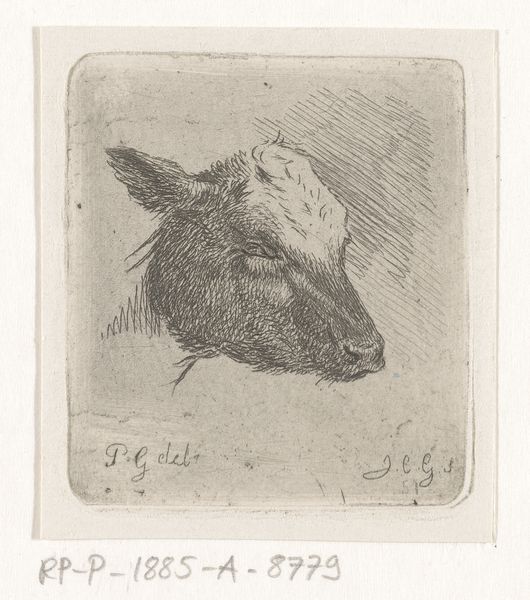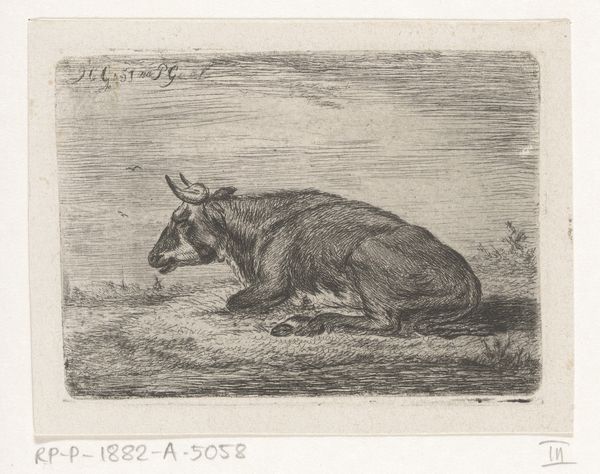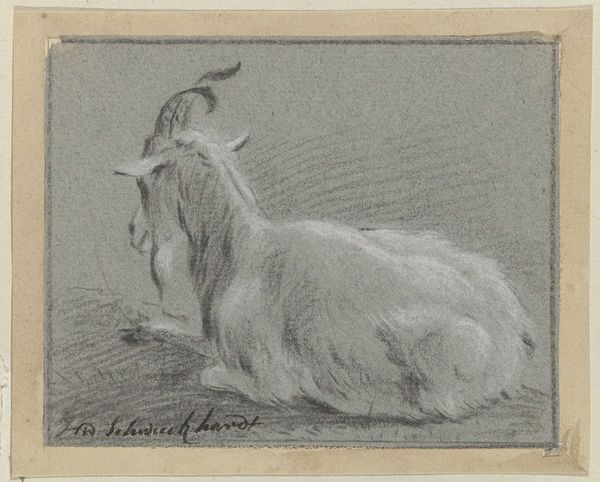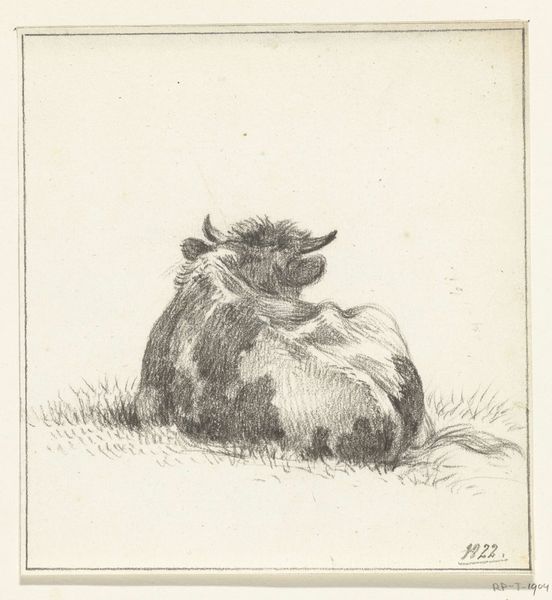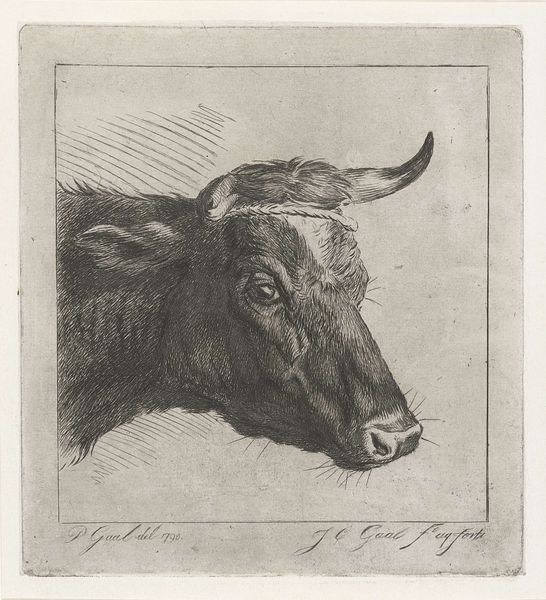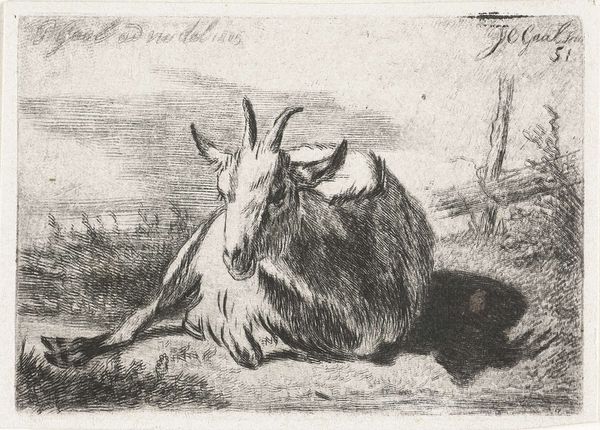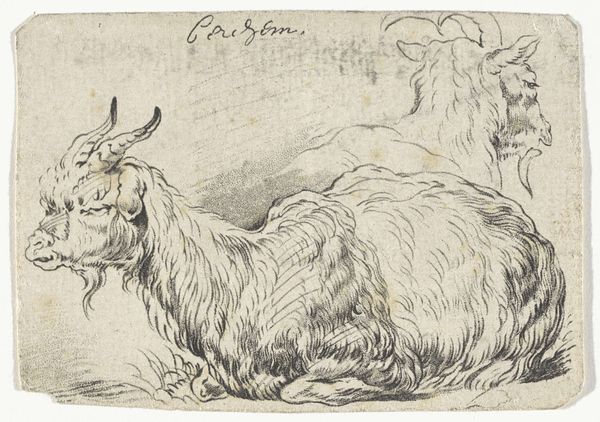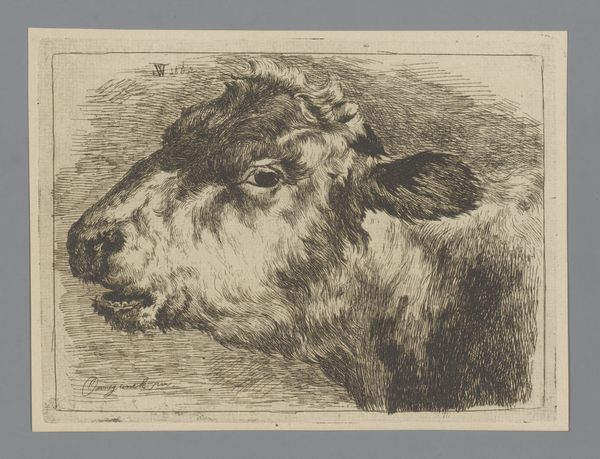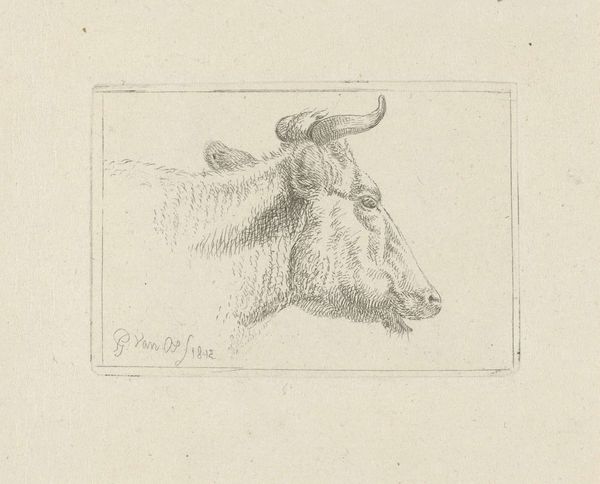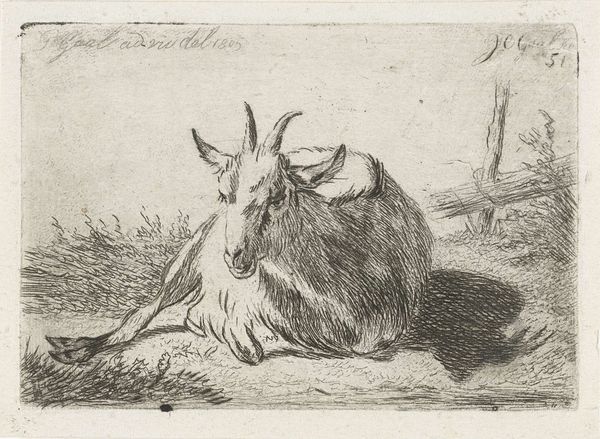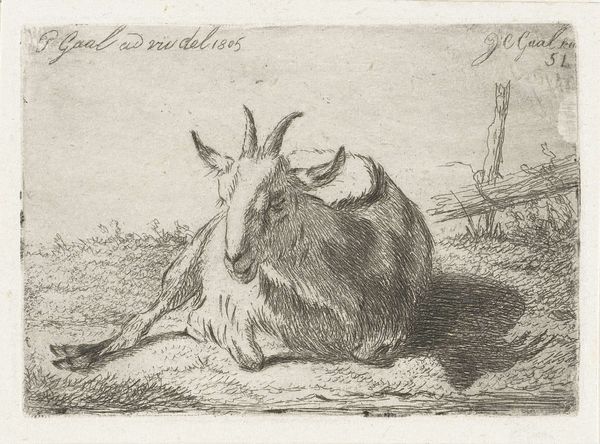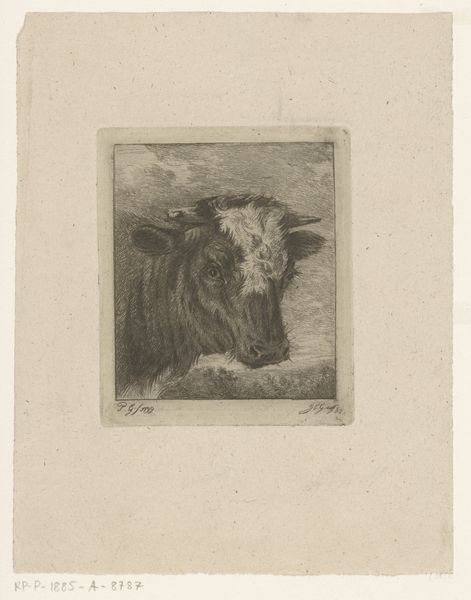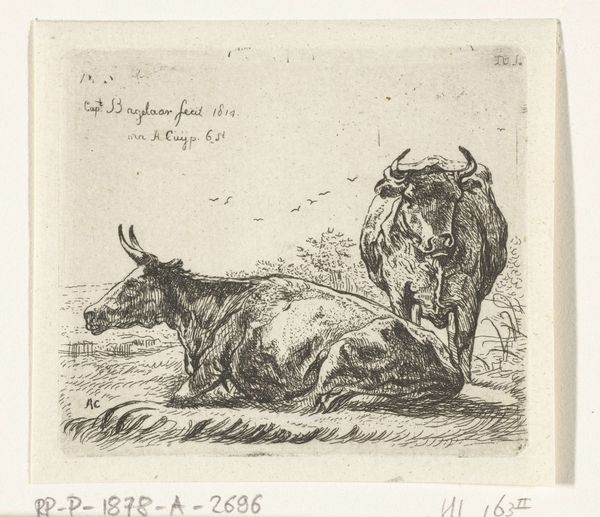
drawing, etching
#
portrait
#
drawing
#
etching
#
realism
Dimensions: height 53 mm, width 48 mm
Copyright: Rijks Museum: Open Domain
Editor: This is Jacobus Cornelis Gaal's "Head of a Mottled Calf," made in 1851, using drawing and etching techniques. The delicate lines give it a fragile feel, almost like a quick sketch. What formal qualities stand out to you in this piece? Curator: Immediately, the striking use of line compels analysis. Observe how the density and direction of the etched lines articulate form. Notice the contrast between the closely hatched areas, defining the calf's features, and the sparser, more gestural lines creating the background. How does this deliberate application of line contribute to the overall structure? Editor: It seems to define the light, drawing attention to the calf itself, and adds some depth. But can line weight affect its impact on the eye? Curator: Indeed. The varying weight of the lines, from fine and delicate to bolder and more pronounced, creates a nuanced interplay of light and shadow. This establishes depth, volume, and textural contrasts that enliven the surface and lend a tangible presence to the animal. Consider the relationship between these technical features and their perceptual consequences for the viewer. Do you feel this draws us closer to it? Editor: It does. Before, it felt flat. Now, with an analysis of lines, the calf really has character. Thank you. Curator: It is in attending to these formal elements that we may appreciate the technical prowess of the artist. Considering our conversation, perhaps you will never view such a "simple" portrait in the same light.
Comments
No comments
Be the first to comment and join the conversation on the ultimate creative platform.
